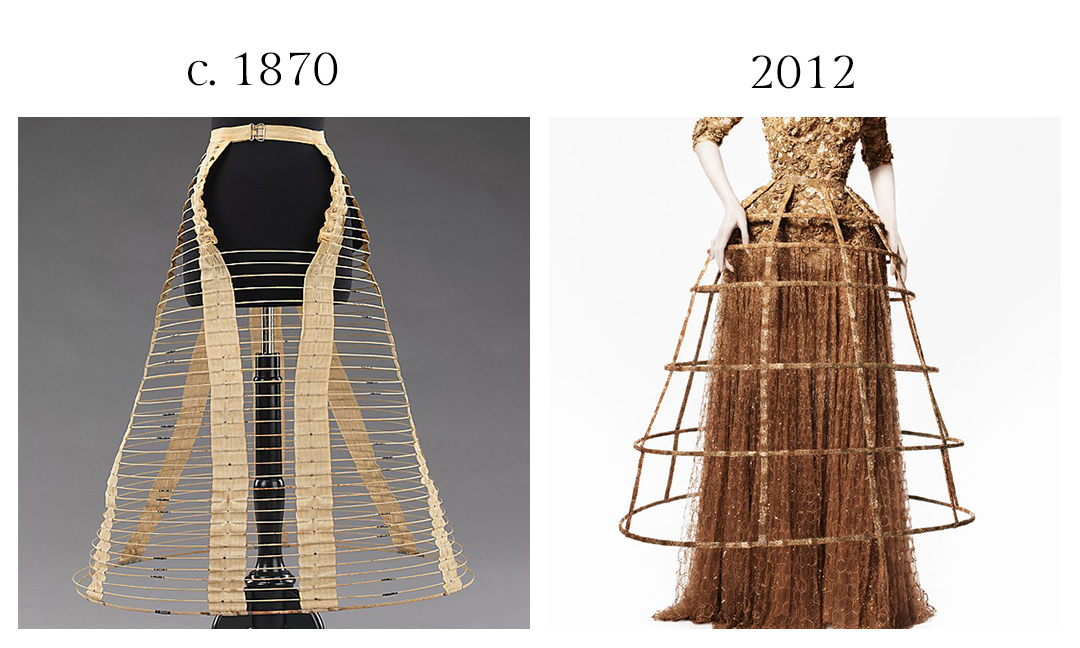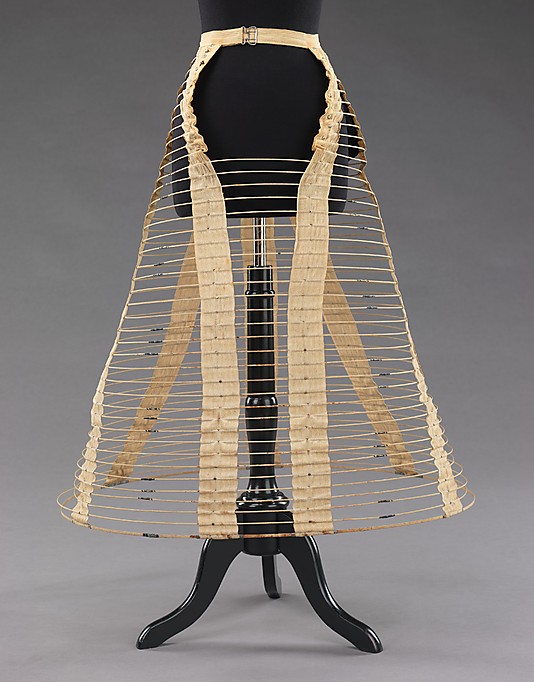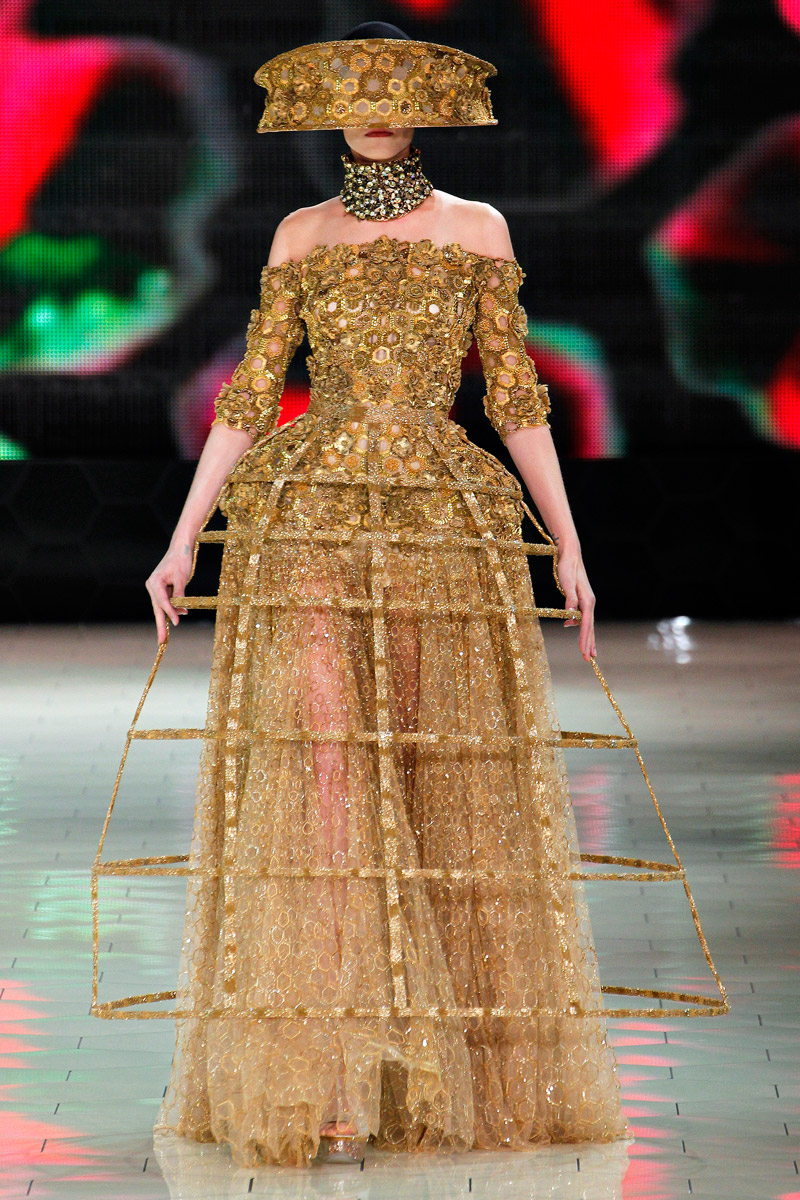At first glance, the cage crinoline appears constricting and oppressive to its wearer, however, the understructure was widely adopted and met with praise in the middle of the 19th century. Previously, women achieved a great expanse in their skirts by layering petticoat upon petticoat, ultimately weighing down the wearer. The cage crinoline, however, was light, flexible and engineered to allow a greater freedom of movement for the wearer. The crinoline could be mass-produced, allowing for a greater number of women to achieve the fashionable silhouette of the period. For Alexander McQueen’s SS 2013 bee-themed collection, Sarah Burton appropriated the cage crinoline on top of, rather than underneath, the skirt. The collection featured hyper-feminized silhouettes reminiscent of the 19th century and explored ideas of protection, veiling and constraint.







